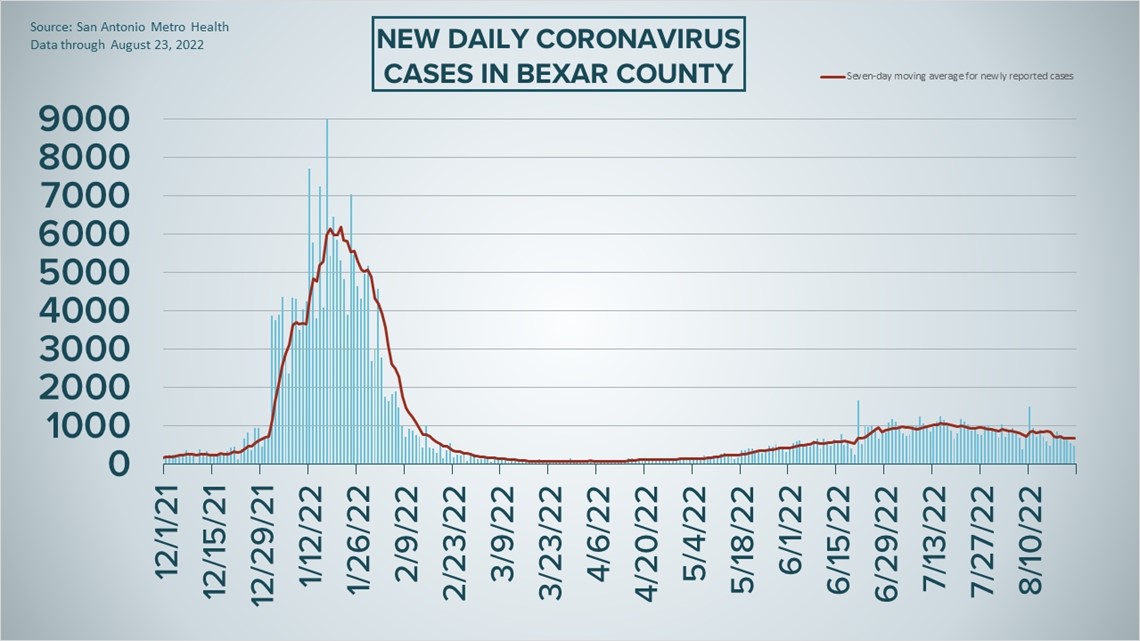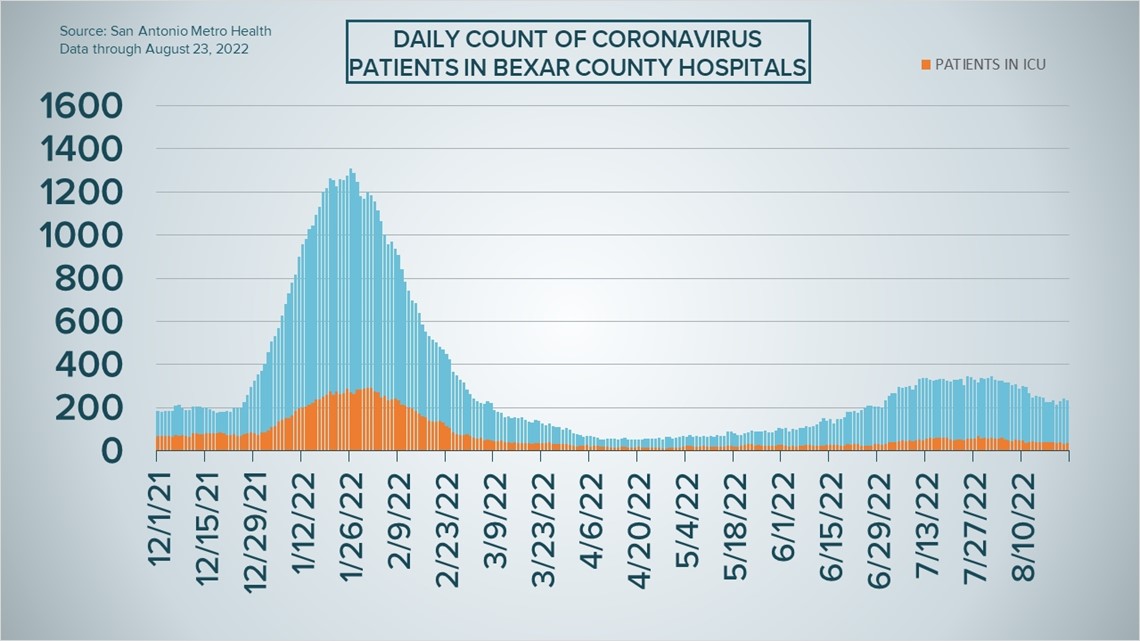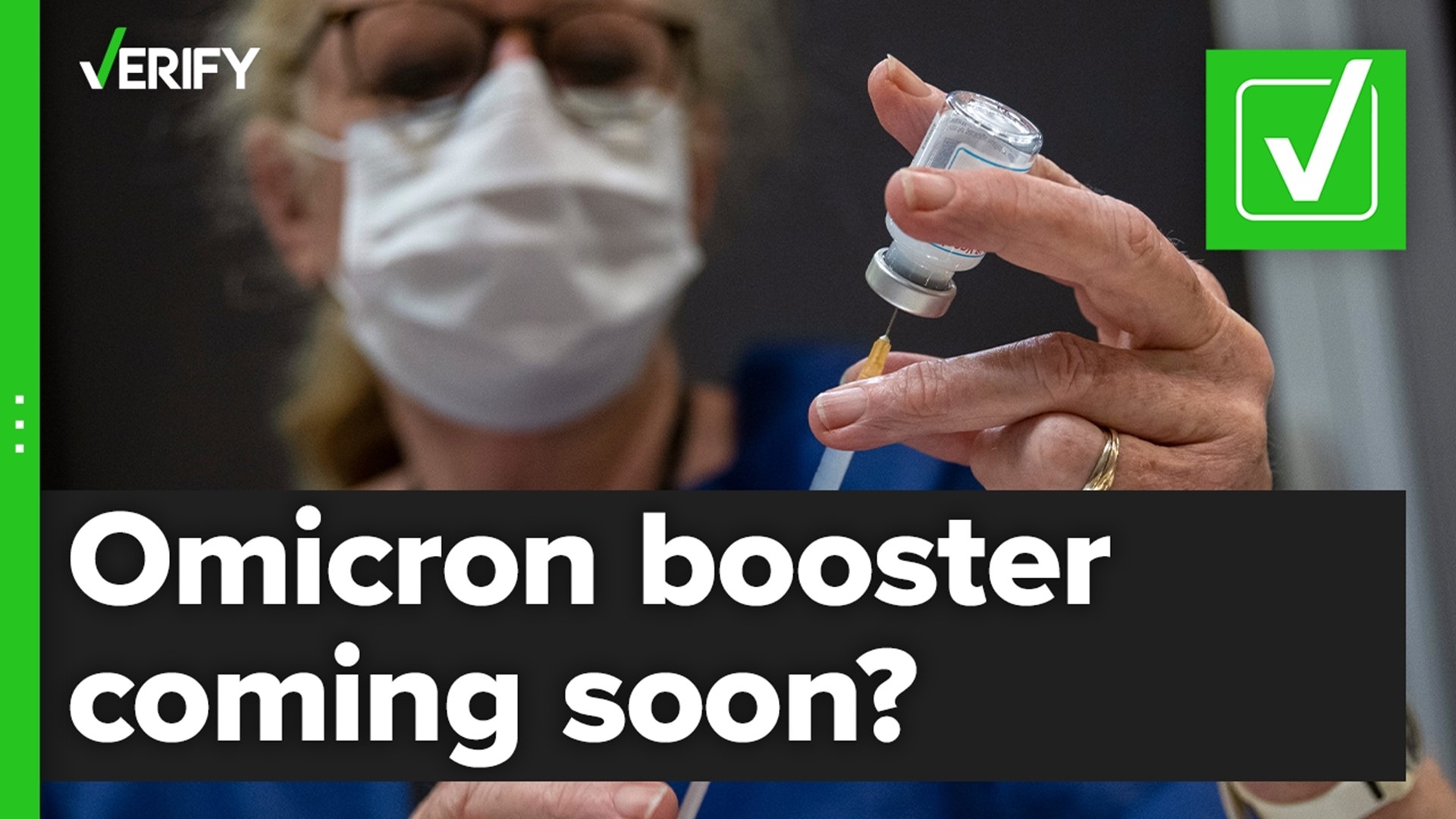SAN ANTONIO — The seven-day coronavirus case average dropped to its lowest levels since June 22 on Tuesday as the San Antonio area continues recovering from July's wave of infections.
August thus far is averaging 745 new cases a day, compared to July's 961—and totals continue to dwindle as the month goes on. Metro Health reported 475 new diagnoses Tuesday, the second-lowest tally since the start of July.
That's good news as Texas students return to classrooms, though it's likely to be at least another week until the numbers reflect any COVID-19 bumps exacerbated by the start of school.
Local COVID-19 hospitalizations, meanwhile, have fluctuated between 253 and 212 over the last 10 days. On Tuesday there were 234 patients receiving treatment for their symptoms, 36 of which were in intensive care and 14 of which were using ventilators. Hospitalizations have fallen by 32% since August 1.
Metro Health, however, has kept its risk level for COVID-19 transmission in the highest threshold, saying numbers remains "steady" this week.
Another virus-related death was reported Tuesday, bringing the local total to 5,353. And, in all, more than 622,000 COVID-19 infections have been reported in Bexar County since the pandemic's start.
How Bexar County is trending




Vaccine progress in Bexar County
The following numbers are provided by San Antonio Metro Health. A full breakdown can be found here.
- 1,469,265 eligible Bexar County residents are fully vaccinated as of August 15, which is about 77.2% of the total population over the age of 4.
- 574,458 eligible Bexar County residents have received a COVID-19 booster shot as of August 15, which is 39.9% percent of the population.
The CDC states that "when a high percentage of the community is immune to a disease (through vaccination and/or prior illness)," that community will have reached herd immunity, "making the spread of this disease from person to person unlikely."
The City of San Antonio breaks down the vaccination rates by zip code on Metro Health's Vaccination Statistics page.
Coronavirus in Texas
The total number of coronavirus cases in the state grew by 6,172 on Tuesday, according to the Texas Department of State Health Services. That total includes 4,060 new confirmed cases and 2,112 new probable cases. More details can be found on this page.
Tuesday's figures bring the total number of Texans diagnosed with COVID-19 to more than 7.67 million.
An additional 26 Texans have died from virus complications, the state reported Wednesday, raising the statewide death toll to 88,373.
Coronavirus symptoms
The symptoms of coronavirus can be similar to the flu or a bad cold. Symptoms include fever or chills, cough, shortness of breath or difficulty breathing, fatigue, muscle or body aches, headache, new loss of taste or smell sore throat, congestion or runny nose, nausea or vomiting, and diarrhea, according to the Centers for Disease Control.
Most healthy people will have mild symptoms. A study of more than 72,000 patients by the Centers for Disease Control in China showed 80 percent of the cases there were mild.
But infections can cause pneumonia, severe acute respiratory syndrome, kidney failure, and even death, according to the World Health Organization. Older people with underlying health conditions are most at risk.
Experts determined there was consistent evidence these conditions increase a person's risk, regardless of age:
- Chronic kidney disease
- COPD (chronic obstructive pulmonary disease)
- Obesity (BMI of 30 or higher)
- Immunocompromised state (weakened immune system) from solid organ transplant
- Serious heart conditions, such as heart failure, coronary artery disease, or cardiomyopathies
- Sickle cell disease
- Type 2 diabetes
- The CDC believes symptoms may appear anywhere from two to 14 days after being exposed.
Human coronaviruses are usually spread...
- Between people who are in close contact with one another (within about 6 feet).
- Through respiratory droplets produced when an infected person coughs, sneezes or talks. These droplets can land in the mouths or noses of people who are nearby or possibly be inhaled into the lungs.
- Some recent studies have suggested that COVID-19 may be spread by people who are not showing symptoms.
Help stop the spread of coronavirus
- Stay home when you are sick.
- Eat and sleep separately from your family members
- Use different utensils and dishes
- Cover your cough or sneeze with your arm, not your hand.
- If you use a tissue, throw it in the trash.
Find a testing location
City officials recommend getting a COVID-19 test if you experience fever or chills, cough, shortness of breath or difficulty breathing, fatigue, muscle or body aches, headache, new loss of taste or smell, sore throat, congestion or runny nose, nausea or vomiting, or diarrhea.
Here's a Testing Sites Locator to help you find the testing location closest to you in San Antonio.
Latest Coronavirus Headlines
- COVID vaccines for fall: Pfizer seeks OK of updated boosters
- 'Did not think she would survive' | Teacher recovers from COVID thanks to double lung transplant
- Pfizer's COVID vaccine for children under 5 is 73% effective
- Jill Biden tests negative for COVID-19, will leave isolation
- 'This is amazing': Why one San Antonio man says he felt better with COVID than without
- Texas doctors discuss health concerns as kids head back to school
- Back-to-school with COVID-19 variants and monkeypox outbreaks

